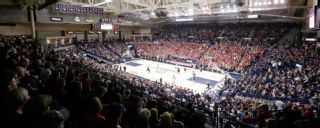|
Over a two-week span, we're answering the following question for college basketball's 10 best conferences: Which venue in each conference is the toughest place to play? A number of factors beyond capacity and attendance could affect a venue's place in the order. Where does your school fall? Fans who frequent the arenas of the West Coast Conference generally can become part of the game. Most of the venues are small enough that there really are not any nosebleed seats. And they are by and large intimate enough that the banter between coaches, players and officials can be heard too. What that really means is that the crowd can be heard and felt and make a difference in the game.  10. San Diego Toreros: Jenny Craig Pavilion, opened in 2000
Like everything in San Diego -- it looks really nice. It blends in with the rest of the campus' 16th century Spanish Renaissance architecture. Not only could you picture yourself playing for the Toreros, you might even picture yourself living in the gym. That's not so good though, when it comes to creating a difficult environment for opponents. The pavilion is usually at its best when USD reaches out to surrounding Naval bases and midshipmen men and women dressed in uniform fill the upper bowl. But it's not an intimidating place. Fun fact: The Jenny Craig Pavilion played host to the Super Bowl XXXVII luncheon. Meal portions did not come with a calorie counter. 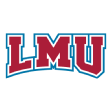 9. Loyola Marymount Lions: Gersten Pavilion, opened in 1981
The LMU band, which occupies one end of the floor behind the basket, might be the best band in the conference. When the Lions have a game that becomes an event, few arenas can pack it in and do it better. Los Angeles being what it is, the crowds can be hit or miss. Historically, Gersten has been a difficult place to play and when the team improves the environment is likely to follow. Fun fact: "Hank's House" is the unofficial name of Gersten Pavilion as a tribute to former LMU star forward Hank Gathers, who led the NCAA in scoring and rebounding the 1988-89 season. (Gathers died in 1990). Gathers (44) and Bo Kimble (30) have the only retired jerseys that hang in the pavilion.  8. Pacific Tigers: Spanos Center, opened in 1981
The Spanos Center is a gym opponents have come to loathe. When the 6,150-seat arena isn't packed, it can have the look and feel like playing in a big, empty place. The lighting isn't the best in the league either, and that darker backdrop can sometimes lull an opponent to sleep. Fun fact: The center is named after Alex G. Spanos, the owner of the NFL's San Diego Chargers, who is a Pacific alumnus.  7. Pepperdine Waves, Firestone Fieldhouse, opened in 1973
No one can blame Pepperdine students or alumni from stopping short of packing Firestone Fieldhouse. After all, scenic Alumni Park that overlooks the Pacific Ocean is situated before approaching the building. Basketball game, or picnic and chill? Tough call. Not to mention Pepperdine isn't an easy drive from Los Angeles. That's why those who do make it inside really want to be there. Many in the student spirit group, nicknamed Riptide, sport orange jumpsuits to the game and their presence is making it an increasingly tough place to visit. Fun fact: The biggest crowd to pack the fieldhouse was 4,500 in Pepperdine's 93-91 upset of No. 3 UNLV on Feb. 6, 1976.  6. Portland Pilots: Chiles Center, opened in 1984
Portland is the second-smallest school in the league and participation in the student section isn't always where it needs to be. (During the 2009-10 season, the Pilots had beaten Oregon, UCLA and Minnesota and were returned home ranked No. 25. They drew only 2,413 against Portland State and lost 86-82.) The program has to work hard just to maintain a connection with the city itself, but the NBA's Blazers could be a reason why it hasn't fully happened. Fun fact: It could be said that former President Ronald Reagan scored first in the arena, giving a speech three days after it officially opened. The basketball team did not play in it until a month later. 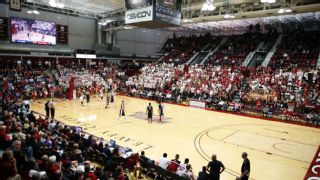  5. Santa Clara Broncos: Leavey Center, opened in 1975
The Leavey Center is considered one of the best arenas in the league and Santa Clara just added a touch to make it more distinct. The playing court now includes a stained painting of the university's iconic Mission Church. Fun fact: The Leavey Center was originally called Toso Pavilion when it opened and it featured an air-supported roof similar to Syracuse's Carrier Dome. (The Pontiac Silverdome and the former RCA Dome in Indianapolis had similar bubbled roofs.) The building was renovated in 2000, deflating the leaky roof for good.  4. San Francisco Dons: War Memorial at Sobrato Center opened in 1958
Formerly known as War Memorial Gymnasium, the arena was built on the strength of the Dons' back-to-back national titles in 1955 and 1956. The oldest gym in the league is currently getting a much-needed facelift. Construction began in May to upgrade the facility. When it's packed, it can be as loud as any venue in the West Coast Conference. Fun fact: John A. Sobrato, a real estate developer who's $15 million gift made renovations possible, is actually a graduate of Santa Clara. 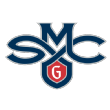 3. Saint Mary's Gaels: McKeon Pavilion, opened in 1978
The place is a pressure cooker. Saint Mary's could build a bigger arena than its 3,500-seat venue and fill it. (Construction will begin this month to expand it an additional 500 seats.) But it's special as it stands. It's an old school kind of venue that gets hot fast and can make opponents feel like the walls are closing in. The Gaels blast Keltic music and with their successful recruiting pipeline into Australia, it's not out of the ordinary to be heckled with an Aussie saying. Fun fact: The Gaels played on McKeon Pavilion's original floor from 1978 to 2004, which gave them a bit of a home-court advantage when dead spots occurred due to its free-floating placement. The updated floor, made of first-grade Maple, features an anchored system that eliminated the dead spots. 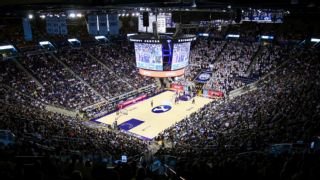  2. BYU Cougars: Marriott Center, opened in 1971
The Marriott Center used to be the largest on-campus arena west of the Mississippi River and the oldest in the nation with a capacity of more than 20,000. But with renovations and upgrades through the years -- including changing some bleacher seats to chairbacks -- capacity is now listed at 18,987. Regardless of the configuration, the crowd is still rowdy and what separates it from other venues is the Marriott Center does not sell beer or alcohol. Fun fact: The Cougars played on the Marriott Center's original floor until 2006. During the final game before the court's upgrade, they retired the jersey of Kresimir Cosic, who played in the first game on the arena's floor.  1. Gonzaga Bulldogs: McCarthey Athletic Center, opened in 2004
No question the magic that vaulted the Bulldogs from mid-major to a perennial top-25 program in the old Martin Centre continued when they opened the new "Kennel" a dozen years ago. Gonzaga consistently pops up among the nation's longest home win streaks and it owns a .926 winning percentage in the 6,000-seat arena. One opposing assistant coach said Gonzaga's students had the "best hecklers in the league" during pregame warm-ups. Fun fact: Every game played in the McCarthey Center has been a sellout for the Bulldogs, who currently have sold out 208 consecutive home games dating to 2003.
|


